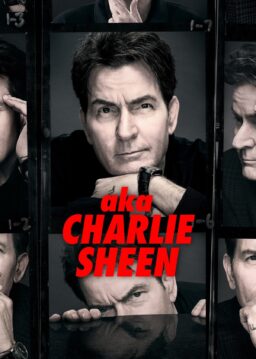No one qualifier accurately describes the comedy special “Bo Burnham: Inside.” The same goes for the multi-talented Burnham who writes, directs, sings, edits, and composes, and can tell a striking joke across all these art forms. The irony, of course, is that “Bo Burnham: Inside” restricts Burnham to a box, one with four walls, three windows, and a pandemic outside. Across 87 minutes, we then watch over the span of many months as he creates his “whatever this thing is” (his descriptive words), working as his own director, writer, cinematographer, editor, gaffer, and focal subject. That means, of course, no audience. The idea of being “inside” takes on many significances throughout the special’s hilarious skits and catchy music videos, and not all of them work, but “Inside” thrives on all that seems to flow out of Burnham. However you approach it, Burnham’s latest creation shows just how snug his self-aware wisdom and darkness can be in his definition of comedy.
“Inside” has very few moments of Burnham sitting and telling jokes. That’s even more of an extension of his performance approach, which usually has him at a piano and winding through one of his original compositions. Instead, “Bo Burnham: Inside” feels to be even more in character with both all of the anxiety within his directorial debut “Eighth Grade” and YouTube culture, expressed with different skits and songs packaged like its own demented YouTube channel on autoplay. In his comedic approach of showing a big picture and letting the absurdity ring in the details, “Inside” riffs on reaction videos, gamer streams, and even ukulele-driven subscriber thanks vids, the latter with Burnham holding a knife and a disturbing grin. To make “Inside” more about the act of creating, he then cuts to behind-the-scenes, vlog-like moments between about every other video, often with him watching the footage of what we just saw, or setting up the next shot.
“Bo Burnham: Inside” is a musical of sorts about phones killing our brain cells, the maddening expanse of capitalism, and his questionable stance of being the messenger about all of the above. These ideas are expressed with catchy pop hits like “Healing the World with Comedy” and two manic interludes that worship Jeff Bezos, all songs that sound like club-ready hits for either 2021 or 1986. It should be stated that the songs are often very funny, even as they get weirder and darker, and the idea of a progressively shaggy Burnham recording everything himself adds to its tension. Every particular lighting set-up, every shot feels to have a story behind it that further traps you with his process, a collaboration between his various own creative impulses but with no outside brain. And like his pop songs, which always throw in a surprising chord change or a sharp variation on melody, he plays with forms and genres as if mixing colors. It’s often that if you’re not laughing, you’re still impressed, if not inspired.
This feels like Burnham achieving his ultimate form, as a parodist who proves again and again to be exceptionally original and wise. He’s the Millennial “Weird Al” Yankovic—a title not lightly given. More specifically, he’s like a Millennial “Weird Al” who works at a used book store where they have an open mic night and a piano. Burnham balances that idea of awareness with entertainment, wanting to project with big goofy images the comedy in sexting or showing how the world works, opposite a sock puppet. In particular here, he creates the creepiest polka that “Weird Al” never wrote, about the sinister expanse of the internet (“apathy’s a tragedy and boredom is a crime / a little bit of everything all of the time.” Whether it’s music or comedy, Burnham uses the formats as different means to get ideas stuck in people’s head and make them aware of their own skin, just like the greats before him.
At some point during “Inside,” it becomes a character piece. Burnham casts himself as someone who is never shown leaving this space, and creates different pieces as his beard grows longer. His clothes seem to vanish as the musical numbers continue; the joy of creating leaves. He celebrates his 30th birthday with a clock striking midnight, and says he has to get back to work. But where Burnham tries to make “Inside” most tortured is where it gets hollow, as his idea on what an entertainer sacrifices of themselves doesn’t entirely add up. The underlying idea here is that he’s suffering to create content, but it’s not clear when enough is enough, or if he’s trying to achieve a certain runtime because Netflix is forcing him to. A bit more transparency on the creative process, and what happens over the isolated project’s timeframe, would help it resonate as an artistic statement.
The special makes more sense when Burnham brings in the heavy blue tones of depression and mental illness, and when he later reveals in the special how he used to have panic attacks on stage, leading to his departure from stand-up. Especially as it shows Burnham open his collapsible bed and crawl into it, “Inside” depicts someone who alternates between creativity and a type of paralysis, as depression can do and certainly did for many during the pandemic. He uses the jumping off point of pandemic-related isolation, playing the relatable part of “man afraid to go outside during lockdown,” to show the interiors of anxiety and then give it a monologue, or a song. It’s interesting that many people have read this as a heavy COVID-related text; I think it’s much more expansive than that, and benefits from lacking in the specifics. Some of his performance starts to crack with brief moments that show him freaking out, as if this lens gets murky. But the idea of “inside,” a mental state, still holds.
The lack of audience is the least surprising thing about Burnham’s special, it turns out—he was raised in the environs of workshopping clever songs during the early years of YouTube, which is its own isolating, crystallizing experience. “Inside” concerns Burnham coming back to stand-up after five years but also coming full circle with this talent that gave him a preternatural idea of what is funny, no audience needed. As it ebbs between darkness and comic relief, “Inside” speaks most to a personal process that is universal, and the solace that will always be there with creativity.












